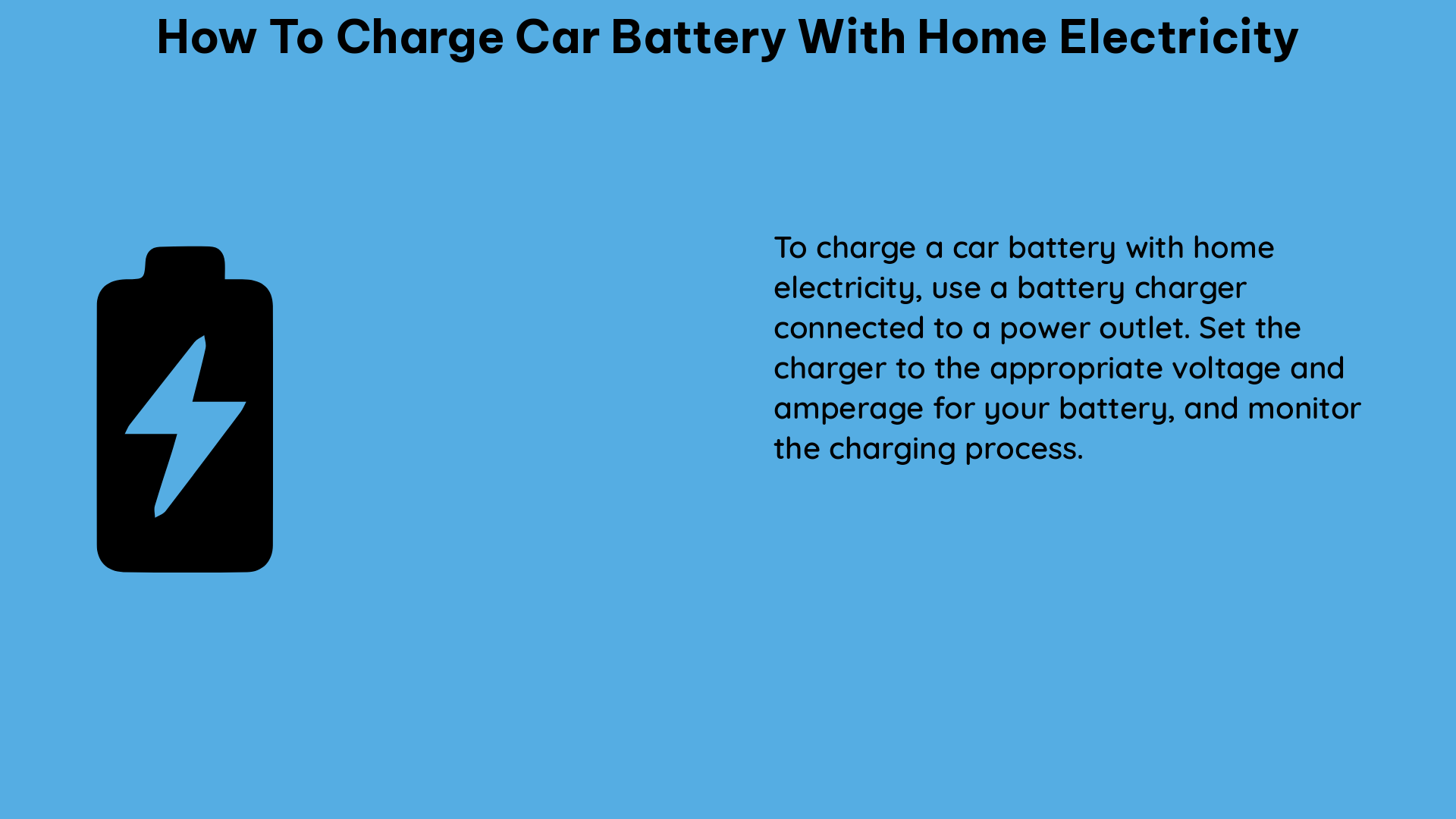Charging a car battery with home electricity can be a cost-effective and convenient solution, but it requires careful attention to voltage, current, and cable quality to avoid damaging the battery or causing a dangerous situation. This comprehensive guide will walk you through the process of using a lab bench power supply or a bicycle generator to charge your car battery safely and effectively.
Understanding the Basics of Car Battery Charging
Lead-acid car batteries typically have a nominal voltage of 12 volts and can vary in capacity from 40 to 100 amp-hours (Ah) or more. To charge a car battery, you need a power source that can provide a constant current of around 1 ampere (A) at a voltage between 13 and 14 volts. This voltage range is important to avoid overcharging the battery, which can lead to damage or even an explosion.
Charging with a Lab Bench Power Supply

Using a lab bench power supply is a reliable and controlled method for charging a car battery. Here’s how to do it:
Equipment Needed
- Lab bench power supply
- Jumper cables
- Fuse (recommended)
Step-by-Step Instructions
- Set the lab bench power supply to constant current mode and adjust the voltage to 13-14V and the current to around 1A.
- Connect the positive terminal of the power supply to the positive terminal of the battery, and the negative terminal of the power supply to the negative terminal of the battery.
- Monitor the voltage and current levels during charging to ensure they remain within the safe limits.
- Charge the battery until it reaches a full state of charge, which can take several hours depending on the battery’s capacity.
- Disconnect the power supply from the battery once charging is complete.
It’s important to use high-quality jumper cables with a minimum gauge of 18 AWG to minimize voltage drop and heat buildup. Additionally, it’s recommended to add a fuse between the power supply and the battery to prevent damage in case of a short circuit.
Charging with a Bicycle Generator
Using a bicycle generator can be an alternative way to charge a car battery, but it requires more effort and attention to maintain a consistent speed.
Equipment Needed
- Bicycle generator
- Battery bank
- Charge controller (optional)
Step-by-Step Instructions
- Set up the bicycle generator and connect it to a battery bank.
- Maintain a consistent pedaling speed to ensure the generator produces a steady output voltage and current.
- Monitor the voltage and current levels to ensure the battery bank is being charged properly.
- Once the battery bank is fully charged, disconnect the generator and use the stored energy to charge the car battery.
It’s important to note that the mechanical watts produced by the cyclist are not directly related to the electrical watts generated by the alternator. A trained cyclist can generate up to 400 watts for an hour or more, but the alternator may only produce up to 1200 watts per hour.
Safety Considerations
Charging a car battery with home electricity can be dangerous if not done properly. Here are some important safety considerations:
- Explosive Gases: Lead-acid batteries produce hydrogen gas while charging, which can be explosive. Always charge the battery in a well-ventilated area, preferably outdoors.
- Short Circuits: A short circuit can cause a fire or damage the battery and power supply. Use a fuse to prevent this.
- Voltage and Current Monitoring: Carefully monitor the voltage and current levels to avoid overcharging or undercharging the battery.
- Cable Quality: Use high-quality jumper cables with a minimum gauge of 18 AWG to minimize voltage drop and heat buildup.
Conclusion
Charging a car battery with home electricity can be a cost-effective and convenient solution, but it requires careful attention to safety and technical details. By following the guidelines and instructions provided in this comprehensive guide, you can charge your car battery safely and effectively using a lab bench power supply or a bicycle generator.
References
- Charging a Car Battery with a Bicycle Generator
- Charging a Car Battery with a Lab Bench Power Supply
- Battery University: Acid Stratification and Surface Charge

The lambdageeks.com Core SME Team is a group of experienced subject matter experts from diverse scientific and technical fields including Physics, Chemistry, Technology,Electronics & Electrical Engineering, Automotive, Mechanical Engineering. Our team collaborates to create high-quality, well-researched articles on a wide range of science and technology topics for the lambdageeks.com website.
All Our Senior SME are having more than 7 Years of experience in the respective fields . They are either Working Industry Professionals or assocaited With different Universities. Refer Our Authors Page to get to know About our Core SMEs.